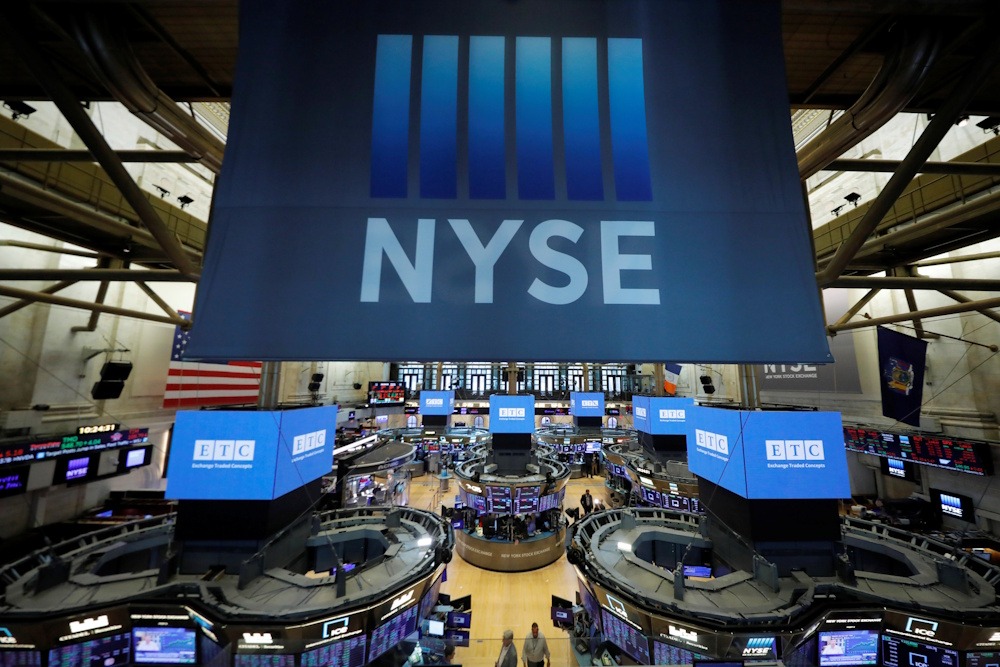
S&P Futures experienced a decline once more on Tuesday, as technology stocks persisted in their downward trajectory amid apprehensions regarding the valuations of artificial intelligence-related equities. Additionally, bitcoin momentarily dipped below $90,000, indicating a waning appetite for risk among investors. The Dow Jones Industrial Average experienced a decline of 370 points, representing a decrease of 0.8%. The S&P 500 declined by 0.5%, positioning itself for a fourth consecutive losing session, marking its longest downturn since August. The Nasdaq Composite experienced a decline of 0.9%. Nvidia, the favored player in the AI chip sector, experienced a decline of 2%. Fellow members of the “Magnificent Seven,” Amazon and Microsoft, also experienced pressure.
Nvidia has experienced a decline of 10% this month in anticipation of the chipmaker’s third-quarter results, which are set to be released after Wednesday’s market close. The company, reporting at the conclusion of a robust earnings season, finds itself at the heart of a discussion regarding the robustness of the AI-driven market rally this year. This comes amid rising apprehensions about elevated tech valuations and the stability of AI fundamentals, particularly in light of a surge in Big Tech debt issuances. Blue Owl, a private credit lender known for substantial loans to AI data centers, experienced a further decline in the premarket following a 6% decrease in the previous session. Earlier this month, Blue Owl announced the merger of two private credit funds, one being private and the other publicly traded. Reports indicate that investors in the private fund are confronting significant losses and will be unable to redeem their capital until the following year. Alphabet’s CEO Sundar Pichai conveyed to the BBC that the current surge in AI does exhibit elements of “irrationality,” asserting that no company “is going to be immune” in the event of a bubble collapse.
Bitcoin fell beneath $90,000 on Tuesday, persisting in its decline from a peak of $126,000 attained in early October. Many technology investors possess substantial cryptocurrency assets, leading to concerns that a more significant downturn in the stock market could ensue following the decline. Bitcoin was last trading just above 91,000. In a development outside the technology sector, Home Depot experienced a decline in its shares following an earnings miss and a reduction in its full-year outlook. The three primary U.S. indexes concluded the prior trading session in negative territory. The 30-stock Dow experienced a decline exceeding 550 points, with the S&P 500 and Nasdaq both recording losses of approximately 0.9%. The tech-heavy Nasdaq appears set to end its seven-month winning streak, while the S&P 500 has declined by 2.5% in November following a six-month rally. “The market narrative has certainly shifted dramatically over the past few weeks, as the market’s reaction function with respect to AI has taken a sharp left turn from rewarding ever-growing capex spend to rapidly growing skepticism of further investment and future returns,” stated Garrett Melson.
“When combined with the crowded positioning observed in real money and systematic accounts, this situation presents all the necessary elements for a significant de-risking event and a corresponding narrative reset.” This month’s unease is compounded by increasing apprehension regarding the Federal Reserve’s potential decision to refrain from implementing a third rate cut in December. Traders in Fed funds futures are currently estimating approximately a 50% likelihood of a rate cut, a notable decrease from the over 90% probability that was reflected just a month prior, as per indications. Investors are relying on the Federal Reserve to stimulate economic growth and maintain low interest rates to support elevated equity valuations. The minutes from the Federal Reserve’s October meeting and the release of September’s nonfarm payrolls are scheduled for publication on Wednesday and Thursday, respectively.
